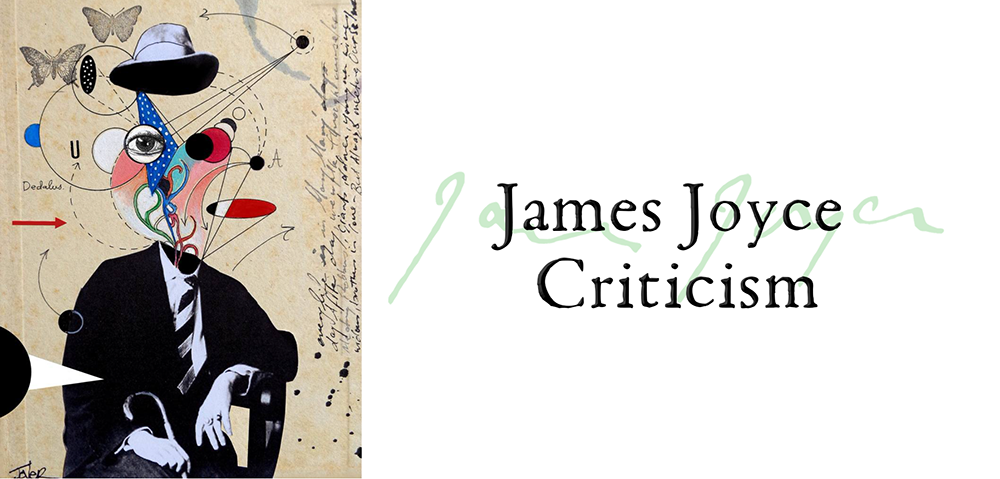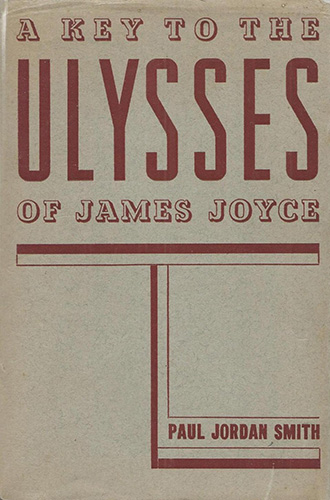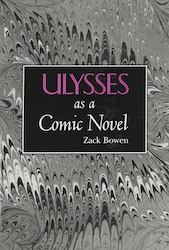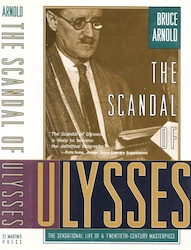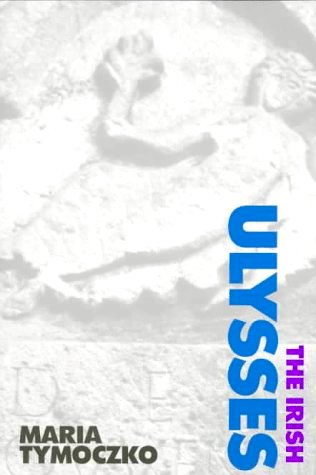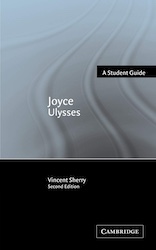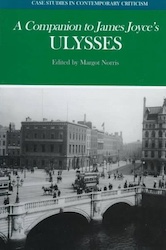Joyce Criticism: Ulysses 1927-1999
- At April 29, 2022
- By Great Quail
- In Joyce
 0
0
Joyce Criticism: Ulysses 1927-1999
This page profiles annotations, guides, and criticism related to Ulysses written from 1927 to 1999. They are listed in chronological order of publication. Clicking the image of a book takes you directly to Amazon.com. When Brazen Head commentary is unavailable, the publisher’s summaries are usually reprinted. If any knowledgeable Joyce reader would like to review, summarize, or provide additional information for any of these “uncommented” books, please drop us a line!
Ulysses Criticism
[Annotated Editions | Criticism 1927-1999 | Criticism 2000-Present]
A Key to the Ulysses of James Joyce
A Key to the Ulysses of James Joyce
By Paul Jordan Smith
First Edition: Pascal Covici, 1927
POD: Literary Licensing, 2013
The first comprehensive book about Joyce’s revolutionary novel, A Key to the Ulysses of James Joyce was written by Paul Jordan Smith (1885-1971), a Universalist minister from Virginia who specialized in the works of Robert Burton. A progressive intellectual with a passion of science and literature, Smith—who later hyphenated his named to “Jordan-Smith”—counted several fascinating American figures as his associates, including Clarence Darrow, Emma Goldman, Floyd Dell, Edward Weston, and Margaret Anderson, one of the editors of The Little Review that first serialized Ulysses in the Unites States. In 1922, the English writer John Cowper Powys persuaded Smith to purchase one of the first editions of Ulysses. Having already glossed and explicated the works of Robert Burton, Smith set himself to understanding Joyce’s scandalous epic, and published his Key in 1927. Among other elements that have now become de rigueur for Ulysses guides, the book contained a Bloomsday map of Dublin.
While today Smith’s study is considered obsolete, it remains an interesting curiosity, as does the man himself. Among his other fascinating exploits, Smith is famous for punking contemporary art by inventing a Russian school of painting called “Disumbrationism,” in which various cheeky subjects were crudely rendered “without shadows.” Surprised by the enthusiastic reception of pieces submitted under the pseudonym “Pavel Jerdanowitch,” Smith continued the hoax until he became bored two years later, finally admitting to the fraud the same year he published his book about Ulysses.
James Joyce’s Ulysses: A Study by Stuart Gilbert
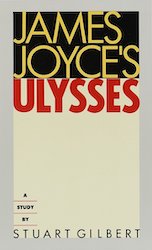
James Joyce’s Ulysses: A Study by Stuart Gilbert
By Stuart Gilbert
First Edition: Faber and Faber, 1930
Second Revised Edition: Vintage, 1952
Available online at: Internet Archive
First published in Paris and free from the interference of French authorities, it was no surprise that Ulysses was soon translated into French after publication. Among the team of translators was a Cambridge Classics scholar named Arthur Stuart Ahluwalia Stronge Gilbert, who had first read Ulysses in Burma working with the Indian Civil Service. An expert on Greek literature, Gilbert was fascinated by the Homeric parallels and correspondences in Ulysses, and became convinced that the only way to properly translate the novel was to properly understand the novel. And so Gilbert began a fruitful relationship with Joyce himself, who proved surprisingly willing to have his work understood. (So much for paring your nails, Jim!) As Bruce Arnold relates in The Scandal of Ulysses:
Gilbert was impressed at Joyce’s patience with him. His career in the Far East had been a judicial one and he was used to the protracted, detailed inquiries “East of Suez” so necessary to get at the truth. Gilbert, at the time, was rereading Homer’s Odyssey in the original Greek, and picked up from Joyce hints and details about the origin of events in Ulysses… But at that stage his priority was to ensure a full understanding of the book for the benefit of the translators and it is reasonable to assume that during this period all of them, but particularly Joyce himself, went through a process of checking on the text which would have brought to light, and caused to be changed, any fundamental errors of composition or omissions of matter. Gilbert also emphasized that his own study was read out to Joyce who gave it his full approbation and who liked the academic approach. It served as a counteracting force to the general perception, at the time, that Ulysses was a violently romantic work, and on this point Gilbert concludes: “It was necessary to emphasise the ‘classical’ and formal elements, the carefully planned layout of the book, and the minute attention given by its author to detail, each phrase, indeed each word, being assigned its place with pointilliste precision.”
Eventually the French translation produced another, arguably more important project—Stuart Gilbert’s James Joyce’s Ulysses. Gilbert’s enlightening study remains the template for all subsequent Ulysses guides. It breaks down the text episode by episode, outlining the now-classic Homeric parallels and “hidden” correspondences structuring each chapter. It also offers annotations for Joyce’s more obscure references and allusions.
Having said that, my advice to first-time readers is to skip Gilbert and pick up Blamires, Gifford, or Hastings. In a way, James Joyce’s Ulysses has become a victim of its own success—all these later guides draw upon Gilbert’s insights, and then add so much more.
James Joyce and the Making of Ulysses

James Joyce and the Making of Ulysses
By Frank Budgen
First Edition: Grayson & Grayson, 1934
Most Current: Oxford University Press, 1989
Available online at: Internet Archive | University of Wisconsin-Madison
Frank Bugden (1882-1971) was an English painter who befriended James Joyce in Zurich. During the years 1918-1919, the two spent a great deal of time together, taking walks, drinking wine, and discussing their respective projects. Joyce used Bugden as a soundboard for his thinking about Ulysses, and Budgen painted several portraits of Joyce. The two maintained a warm correspondence even after the War, when Budgen returned to England and pursued a political career as a socialist. In 1934, Budgen published James Joyce and the Making of Ulysses.
One of the most interesting works of early Joyce scholarship, Budgen’s book offers an approachable walkthrough of each episode in Ulysses, detailing the relevant characters, actions, and conversations in plain language. In this way, The Making of Ulysses is the precursor to works like Harry Blamires’ Bloomsday Book and Patrick Hastings’ Guide to James Joyce’s Ulysses. What makes Budgen’s guide unique, of course, is his personal relationship with James Joyce himself. As Joyce’s trusted confidant, Budgen offers an unparalleled window into Joyce’s creative process. For instance, this passage excerpted from the chapter on “Proteus”:
You were going to do wonders, what? Missionary to Europe after fiery Columbanus. Fiacre and Scotus on their creepystools in Heaven spilt from their pintpots loudlatinlaughing: Euge! Euge! Pretending to speak broken English as you dragged your valise, porter threepence, across the slimy pier at Newhaven. Comment? Rich booty you brought back; Le Tutu, five tattered numbers of Pantalon Blanc et Culotte Rouge, a blue French telegram, curiosity to show:
‘Mother dying come home father.’
Joyce looked up and said:
“I haven’t let this young man off very lightly, have I? Many writers have written about themselves. I wonder if any one of them has been as candid as I have?”
While one may legitimately wonder about the accuracy of conversations recalled years after the fact, Budgen shows a genuine warmth and affection for his friend, and the image of Joyce that emerges from his reflections is remarkably consistent. Along with reminiscences about his time spent with Joyce, Budgen also offers insightful comments on Dubliners, Portrait, and Finnegans Wake, then known as “Work in Progress.” As befitting a book written by an artist, The Making of Ulysses features several illustrations, including this dynamic depiction of Proteus:
Sadly, Budgen’s memoir/guide has been out of print since 1989, but used copies remain plentiful, and a free PDF is available through the University of Wisconsin-Madison.
Fabulous Voyager: James Joyce’s Ulysses
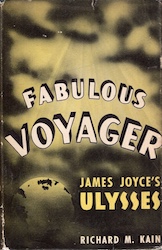
Fabulous Voyager: James Joyce’s Ulysses
By Richard M. Kain
University of Chicago Press, 1947
Available online at: Internet Archive
Widely recognized as one of the first American Joyce scholars, Richard Morgan Kain was an early editor of the James Joyce Quarterly. The following notes are excerpted from a biographical sketch hosted by the University of Louisville:
Richard Morgan Kain was an internationally recognized authority on the work of James Joyce. His career as a professor and chairman of the humanities division at the University of Louisville was periodically interrupted with visiting professorships at Harvard and University College, Dublin, and by his lectures at universities around the world and at Joyce Symposia in Dublin, Trieste, Paris, and Monte Carlo.
In 1944 he broke new ground by offering one of the first college courses on James Joyce to be given anywhere. His first book, Fabulous Voyager (1947), stands as a landmark—one of the earliest significant critical works on Joyce. His research on Joyce grew to encompass all the writers of the Irish Literary Renaissance, including Yeats, A.E., Synge, Gogarty, Lady Gregory, and Tynan, as well as later writers such as Brendan Behan, Edna O’Brien, and Susan L. Mitchell.
His working library includes a wealth of editions, including editions of Joyce, a complete file of Little Review with the first appearance of Ulysses, including the rare suppressed issues, and a comprehensive collection of first editions (often signed) of Yeats and all other writers and personalities of the Irish Literary Renaissance. He also collected material on Irish politics and history, as well as extensive documentation of Dublin, its history, architecture, and culture.
Thanks to the Music in the Work of James Joyce site for this excerpt!
Allusions in Ulysses: An Annotated List
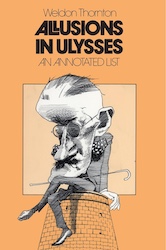
Allusions in Ulysses: An Annotated List
By Weldon Thornton
University of North Carolina Press, 1961
Available online at: Internet Archive
Weldon Thornton was the first Joycean to publish a comprehensive set of Ulysses annotations. While Don Gifford’s Ulysses Annotated may be more complete, Allusions is more friendly to the beginning reader. Unlike Gifford, who attempts to dissect, explicate, and annotate every intertextual reference and narrative device, Thornton confines his remarks to the direct allusions contained within the text itself. For those looking for something between the walkthrough of Blamires’ New Bloomsday Book and the colossus of Gifford’s Ulysses Annotated, Thornton’s Allusions serves quite nicely!
The Bloomsday Book
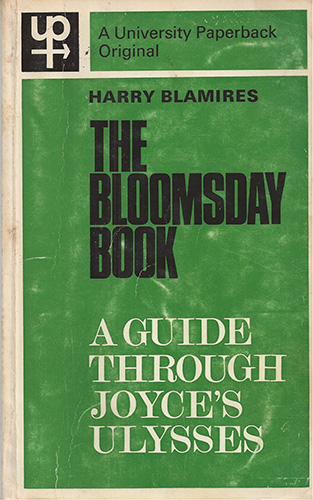
The Bloomsday Book
By Harry Blamires
First Edition: Methuen & Company, 1966
Available online at: Internet Archive
The New Bloomsday Book
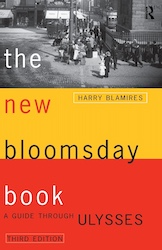
The New Bloomsday Book
By Harry Blamires
Second Edition: Routledge, 1988
Third Edition: Routledge, 1996
Available online at: Internet Archive
A revision of the classic 1966 guide, The New Bloomsday Book is one of the more handy companions to Ulysses. Pleasantly compact, it’s easy to carry around for that unexpected reference fix, fitting snugly against a copy of Ulysses in any book bag. Essentially a “walk-through” of the text, the The New Bloomsday Book is logically organized in 18 chapters, each one summarizing and clarifying an episode of the novel. Blamires offers helpful correlations throughout, and alerts the reader to various recurring elements and themes. One of my favorite aspects about the book is its tone—unlike some beginner’s guides to Ulysses, Blamire never condescends to the reader, nor does he come across as lecturing or pedantic. It’s also one of the less anal-retentive guides, making sense of the text without beating it to death for every nugget of symbolism the author can find (or invent). If you’re looking for a simple and useful guide rather than a biblical opus of annotations, Blamires is a good place to start; although Killeen’s Ulysses Unbound and Hastings’ Guide to James Joyce’s Ulysses may have more to say for the modern reader.
Ulysses: The Mechanics of Meaning
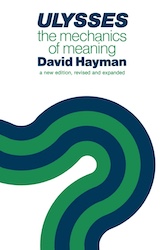
Ulysses: The Mechanics of Meaning
By David Hayman
First Edition: University of Wisconsin Press, 1970
Second Revised & Expanded Edition: University of Wisconsin Press, 1982
Available online at: Internet Archive
Publisher’s Description: Since its original publication in 1970, Ulysses: the Mechanics of Meaning has become one of the most talked about, cited, and respected of commentaries on Joyce’s classic work. Its compact format and its crisp, lucid style make David Hayman’s book an essential one for all new readers of Ulysses. For this new edition Hayman has added a convenient chapter-by-chapter account of the action and a substantial afterword extending and amplifying ideas presented in the original edition and briefly summarizing the current critical scene.
Ulysses on the Liffey
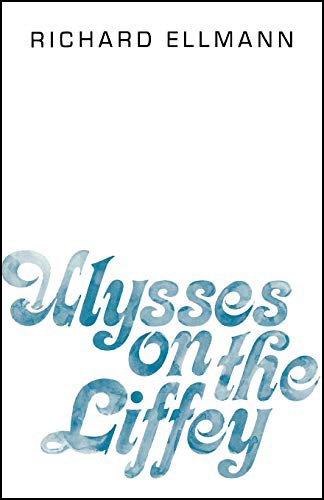
Ulysses on the Liffey
By Richard Ellmann
Oxford University Press, 1973
Available online at: Internet Archive
Bob Williams: Richard Ellmann is the Michelangelo of writers on Joyce. This book is the crest of the wave for the many excellent books written about this time. The idea of Bloom as father of Stephen, and of Stephen as seeker of a father, is more firmly entrenched in this book about Ulysses than it is in Ulysses itself, but Ellmann otherwise has something pertinent to say about all major aspects of the book. His concerns are vertical as well as horizontal, and he brings out relationships and structural patterns often lost in a more linear commentary. Like his monumental biography of Joyce, this book in style and breadth of mind is well worth reading for its own sake.
Ulysses Annotated: Notes for James Joyce’s Ulysses
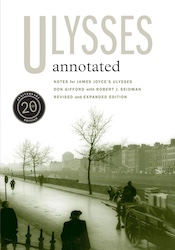
Ulysses Annotated: Notes for James Joyce’s Ulysses
By Don Gifford with Robert J. Seidman
First Edition: E.P. Dutton, 1974
Revised and Expanded Edition: University of California Press, 1988
20th Anniversary Edition: University of California Press, 2008
Available online at: Internet Archive
Gifford’s celebrated book is pretty much the “Ulysses Bible.” Vast and aggressively comprehensive in scope, Gifford and his researchers have created an astonishingly complete glossing of the text. Every episode is introduced with a summary, a detailed map, and a breakdown of Homeric parallels and schema correspondences. From there, the annotations supply background information for every name, place, event, and historical personage. Poems and songs—even those only briefly mentioned in the text—are usually printed in full, and translations are provided for everything from Latin phrases to Anglicized Irish slang. The more tricky episodes are given more intensive treatment as well. The musical devices of “Sirens” and the rhetorical tropes of “Aeolus” are generously explicated, while “Oxen of the Sun” is subjected to a painstaking analysis, each paragraph clarified in terms of the author and/or style Joyce is parodying. Gifford also points out Joyce’s errors and miscalculations. (Excuse me—“portals of discovery.”) This isn’t a quickie guidebook for casual readers; but for those attempting a full study of Ulysses, it’s simply invaluable.
James Joyce’s Ulysses: Critical Essays
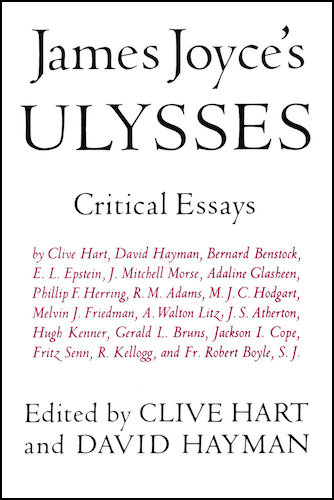
James Joyce’s Ulysses: Critical Essays
Edited by Clive Hart & David Hayman
University of California Press, 1974
This collection includes an essay for each episode of Ulysses.
Contents:
- Bernard Benstock, “Telemachus”
- E.L. Epstein, “Nestor”
- J. Mitchell Morse, “Proteus”
- Adaline Glasheen, “Calypso”
- Phillip F. Herring, “Lotus Eaters”
- R. M. Adams, “Hades”
- M.J.C. Hodgart, “Aeolus”
- Melvin J. Friedman, “Lestrygonians”
- Robert Kellogg, “Scylla and Charybdis”
- Clive Hart, “Wandering Rocks”
- Jackson I. Cope, “Sirens”
- David Hayman, “Cyclops”
- Fritz Senn, “Nausicaa”
- J.S. Atherton, “The Oxen of the Sun”
- Hugh Kenner, “Circe”
- Gerald L. Bruns, “Eumaeus”
- A. Walton Litz, “Ithaca”
- Fr. Robert Boyle, S.J., “Penelope”
The writer Bob R. Bogle, author of Up the Creek, shared this review with the Brazen Head:
A few years ago some Twitter wit, I forget whom, suggested that the eighteen episodes comprising James Joyce’s Ulysses might be conceived of as more-or-less independent scrolls; that the compounded tome represents a collection of said scrolls compiled in a manner like unto how Homer might have aggregated The Odyssey from the efforts of pre-existing raconteurs, imparting his own authorial stamp to the collective work. While I’ve no indication that such was Joyce’s intent, I’ve ever since found the mental image of a disheveled pile of scrolls to be a useful model for thinking about Ulysses and its (in)famously radical shifts of style and emphasis from one episode to the next. This could also account for Joyce referring to said independent components as episodes rather than the conventional chapters.
Taking on Ulysses episode by episode, James Joyce’s Ulysses: Critical Essays, edited by Hart and Hayman, is so stuffed with invaluable insights that never before in my life have I filled up a book with so many Post-It notes for later review. Having already been though Ulysses about seven or eight times in the last few years, and beginning—so I innocently believed—to acquire a certain panoramic vision and appreciation of its sweeping narrative and vast multitude of characters, Hart and Hayman humbled me, revealing that in some ways I am only just beginning to break down through the superficial crust of the book and to plunge into the true and unexpected allusive ocean of dimly-lit psychopoetics which broods beneath. Some of the episodes I now must fundamentally rethink; others I now suspect I perceive only through the darkest glass most obscurely.
Of course this is the great fun of reading James Joyce, and what you find in no other writer: as soon as the words “I understand” occur to you, the solid earth crumbles from beneath your feet. It’s not so much a matter of coming to understand Joyce’s stories as it is learning how to read, and reconsidering what the act of reading is, or can, or may be.
Some of the eighteen essays to be found in Hart and Hayman—one essay for each of the episodes in Ulysses—are more mind-blowing than others. Robert Kellogg on “Scylla and Charybdis” is something of a revelation. Clive Hart on “Wandering Rocks” is nothing less than astonishing. Jackson Cope is a most helpful guide through the musicality of “Sirens,” providing a number of useful guideposts. David Hayman shows us how the text of “Cyclops” is nested in a way I hadn’t picked up on before, and also here sets out his critical Arranger theory of narration throughout Ulysses, which by itself makes this particular essay a vital one. Likewise while J.S. Atherton may not be the last word on “Oxen of the Sun,” he probably comes close; at a minimum, Atherton’s essay is unquestionably required reading.
Reading and carefully reflecting on Gifford’s Ulysses Annotated and Gilbert’s James Joyce’s Ulysses: A Study are of secondary importance only to successive re-readings of Joyce’s original text if one hopes to begin to garner something approaching a respectable comprehension of Ulysses. James Joyce’s Ulysses: Critical Essays is likewise an important reference work, though perhaps a bit less so for the layman than for the academic scholar, but only a bit. If Gifford and Gilbert and Joyce were required reading for a 400-level course, then you’d expect to encounter Hart and Hayman in a graduate course. It’s not too much for the layman to come to terms with. I am myself such a layman, and I find this book to be masterful and helpful in the extreme.
Ulysses in Progress
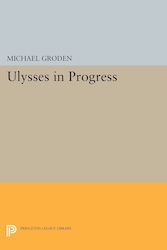
Ulysses In Progress
By Michael Groden
Princeton University Press, 1977
Available online at: JamesJoyceUlyssesWeebly
The writer Bob R. Bogle, author of Up the Creek, shared this review with the Brazen Head:
We understand the world by classifying its objects and organization structurally. We seek order in all things, and when we don’t find order we tend to impose our own from the outside. God knows James Joyce did.
Reading Ulysses for the first time, a novice is struck by the extraordinary stylistic mutations that occur throughout the length of the novel. In terms of literary prowess, the last half of the book is lightyears removed from the first half, and the first half is lightyears removed from what anyone else had done up to that time (i.e., about 1914). To some the complexity of Ulysses is an insurmountable stumbling block. Others of us find the challenge itself, lacking in all that came before and in all genre fiction which has come since, to be this book’s ultimate appeal.
Michael Groden recognizes that the difficulty of Ulysses is not merely the erudition of its author and its characters and the encyclopedic portrayal of 1904 Dublin, but a consequence of Joyce’s radical evolution as a writer during the novel’s composition. Groden walks us through that evolutionary and revolutionary process as Joyce turned away from an emphasis on plot and characterization to a focus on style and constructing systems of correspondence that build up an intricate network of symbolism binding all together. In Ulysses in Progress a three-stage production of the novel is proposed. In the first stage, roughly the first half of the book, Joyce conformed to an initial style: a restrained third-person narration with groundbreaking interior monologue limited to two point-of-view characters, Stephen Dedalus and Leopold Bloom. Joyce adhered to this initial style from the beginning of the novel through the episode of Scylla and Charybdis. In the transitional middle stage Groden finds Joyce breaking away from the interior monologue and experimenting with other narrative framing devices that gravitate toward parody. The seminal examples of this middle stage are found in the episodes “Cyclops,” “Nausicaa” and “Oxen of the Sun.” The hallmark of the last stage, during which the book’s last four episodes were written and major changes were made to all that went before, is expansion and encyclopedism, illustrated best in “Circe,” “Ithaca” and, to a degree, in “Penelope.”
Groden’s compelling book is written with impressive clarity and concision, considering the difficulty of its subject matter. It is very often illuminating and an eye-opener. To pick out one example, Groden draws narrative parallels between the “hallucinations” in “Circe” and the gigantic digressions in “Cyclops” in a manner I haven’t encountered elsewhere. In fact, Groden’s comments about the distinction between intrusive blocks of gigantic parody and smaller “Butcher-and-Lang” voice usurpations of the text (i.e., the theory that the target of relatively minor Victorian parodies in “Cyclops” is the Butcher and Lang translation of The Odyssey) or their equivalent are quite savvy. The tale of the years Joyce spent writing Ulysses is dramatic, and while Groden resists the temptation to elaborate on digressions not germane to his immediate thesis, the story he weaves holds the reader’s attention and is chockfull of unexpected perceptivity and detail.
I have nothing but praise for Groden’s defense of his carefully structured premise, but I am somewhat skeptical of how well his three-stage account of the composition of Ulysses works in practice. The transitional episodes of “Wandering Rocks” and “Sirens,” ill-fitting with either the early or middle stage episodes, become orphans. “Wandering Rocks” is more of a hinging entr’acte coming on the heels of “Scylla and Charybdis” (wisely Groden proclaims the “novel” ends with that episode), and “Sirens,” although magnificently experimental and, to some, awe-invoking, lacks the parodic narrative incursions citied by Groden as typic of the middle stage. Moreover, the narrative takeover so prominent in later episodes is already quite apparent in “Scylla and Charybdis” (and earlier to those looking for it). Not all of these incursions represent late modifications to earlier texts.
While providing a powerful description, or identification, of the process of narrative incursion, Groden neither arrives at a general, overarching theory of the same nor cites the well-known theories of others (e.g., David Hayman’s Arranger theory). The narrative distortion, most especially noticeable in the second half of Ulysses, becomes itself an improbably important part of the symbolic structure holding the text together. It seems to me that without coming to terms with the dominating textual sabotage in play throughout Ulysses, no account of the book’s assembly can be complete.
Ulysses in Progress is, nevertheless, a significant and very well written analysis of the text, even one of major importance, and I strongly recommend it.
Joyce’s Moraculous Sindbook: A Study of Ulysses
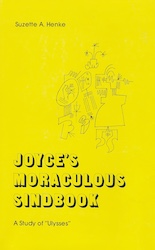
Joyce’s Moraculous Sindbook: A Study of Ulysses
By Suzette A. Henke
Ohio State University Press, 1978
Available online at: Internet Archive
Publisher’s Description: Suzette Henke makes use of various Continental methods of literary criticism to reconstruct Ulysses as a fictional life-world, and draws upon phenomenology, Geneva criticism, psychoanalytic investigation, and linguistic analysis to illumine the progress of the narrative.
Ulysses
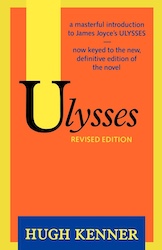
Ulysses
By Hugh Kenner
First Edition: Unwin Critical Library Series, 1980
Revised Edition: Johns Hopkins University Press, 1987
Available online at: Internet Archive
Kenner’s fascinating book is less a guide to Ulysses than to the man who wrote it. Kenner puts Joyce squarely in the Modernist period, and traces the development of the novel from Joyce’s formative ideas to its thrilling conclusion. He focuses on the book’s Modernist structure, elaborating the Homeric parallels and detailing the intentions of the many stylistic variations. It’s an excellent study for those wishing to understand Ulysses as an organic creation, the product of a unique author and epoch.
Cliffs Notes on Joyce’s Ulysses
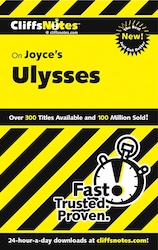
Cliffs Notes on Joyce’s Ulysses
By Edward D. Kopper Jr.
Cliffs Notes, 1981
Available online at: Cliffs Notes
Before the Internet, these yellow booklets were recognizable from a mile away, folded into the knapsacks of every literature student too lazy to read A Scarlet Letter. Written in 1981, the Cliffs Notes on Ulysses undoubtedly helped a few befuddled students wondering what they had gotten themselves into! Unfortunately, they’re just not very good. On the positive side, Kopper dutifully lists all the characters, and provides some pithy character analysis at the end; but his chapter-by-chapter commentaries are rather annoying. Kopper pays too much attention to arcane details, and his tone is unduly dry and irritatingly condescending. It’s clear that Kopper has an authoritative understanding of the book, but he’s so intent on constructing a clever web of interconnections that the seems to miss the forest for the trees, and students are left wondering exactly why they should even care about Ulysses in the first place. For readers seeking a shorter guide to Ulysses’ structure, Harry Blamires’ New Bloomsday Book is a much better choice.
Leopold Bloom: A Biography
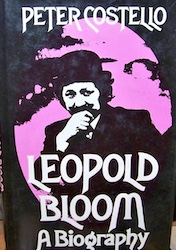
Leopold Bloom: A Biography
By Peter Costello
HarperCollins, 1981
A “fictional biography” of Leopold Bloom, this fanciful book was written by Peter Costello, who’d later publish one of the larger post-Ellmann biographies of James Joyce. Costello doesn’t just summarize Bloom’s life in Ulysses, but playfully speculates about the events of June 17 and beyond.
Ulysses: Modern Critical Interpretations
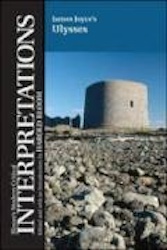
Ulysses: Modern Critical Interpretations
Edited by Harold Bloom & William Goldman
Chelsea House, 1987
Available online at: Internet Archive
Another offering from Harold Bloom’s prolific Chelsea House, the Daisy Hill Puppy Farm of literary analysis. This collection contains nine essays about Ulysses from noteworthy twentieth-century Joyceans like Richard Ellmann, Hugh Kenner, and Fritz Senn.
Contents:
- Harold Bloom: Introduction
- Richard Ellmann, “The Backgrounds of Ulysses”
- Wolfgang Iser, “Doing Things In Style: An Interpretation of The Oxen of the Sun”
- A. Walton Litz, “Ithaca”
- Dorrit Cohn, “The Autonomous Monologue”
- Hugh Kenner, “The Aesthetic of Delay”
- Jean-Michel Rabaté, “A Clown’s Inquest into Paternity: Fathers, Dead or Alive, In Ulysses”
- Fritz Senn, “Righting Ulysses”
- Ramón Saldívar, “Bloom’s Metaphors and the Language of Flowers”
- Cheryl Herr, “Nature and Culture in ‘The Sirens’ Episode in Joyce’s Ulysses”
The Self-Conscious Novel: Artifice in Fiction from Joyce to Pynchon
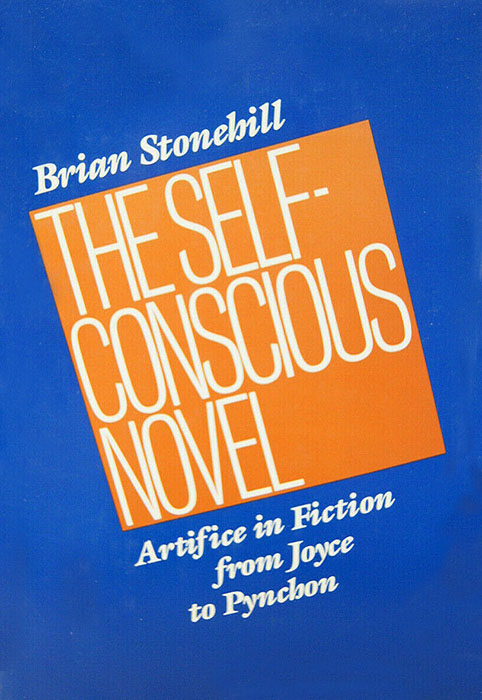
The Self-Conscious Novel: Artifice in Fiction from Joyce to Pynchon
By Brian Stonehill
University of Pennsylvania Press, 1988
Available online at: Internet Archive
Brian Stonehill (1953–1997) was Professor of English at Pomona College.
Table of Contents:
1. Imitation’s Limitations; or, Why Writers Write About Writers Writing
2. The Repertoire of Reflexivity
3. The Self-Conscious Tradition
4. Getting Back at James Joyce
5. Nabokov’s Imitations of Mortality
6. Plagiarizing the Recognitions
7. Paradoxical Pynchon; or, The Real World Inside Gravity’s Rainbow
8. A Trestle of Letters
9. The Criticism of Self-Consciousness
10. Reflexive Commentary in the Form of a Conclusion
Reviews: Marvin Magalaner’s review of The Self-Conscious Novel was published in Modern Fiction Studies, Vol. 34, No. 4 (Winter 1988), pp. 738–739, [Project MUSE paywall]. An excerpt of Magalaner’s review offers a taste of Stonehill’s book:
Brian Stonehill’s book on The Self-Conscious Novel will be welcomed by students seeking to impose some order and definition on the increasingly impenetrable output of the postmodernists now flowing into the literary marketplace. With its sensible analysis and its ordered categories of the characteristics of “self-conscious” fiction, it provides a guide of sorts through the jungle. That it does so through a short but rigorous examination of the work of five preeminent novelists—James Joyce, Vladimir Nabokov, William Gaddis, Thomas Pynchon, and John Barth—adds to the value of the undertaking… After a look at the “self-conscious” tradition of Sterne, Beckett, Borges, Gide, and even Proust, Stonehill examines Joyce’s Ulysses in some detail to demonstrate that “a self-conscious emphasis on artifice strives essentially to assert the presence of the performing artist.” He does this by analyzing the “Aeolus” and “Oxen of the Sun” episodes. He finds that in the former Joyce works through the manipulation of time cycles, the employment of palindrome, and the frequent use of abrupt shifts of setting, reinforcing the strength of literary artifice and dramatizing the author’s role as artist. In “Oxen,” as Stonehill sees it, the idea is to multiply the narrators in order to call attention to the composition of the fiction itself by the artist. Further, because the narrators speak each in a different, recognizable English prose style (extending from Anglo-Saxon to modern slang), the author is able to embrace self-consciously the whole of English style and language as his property. If the aim is to impress upon the reader that the author is an artist, this critic argues, then Joyce’s effort succeeds admirably. In a long and enlightening chapter on the devices Nabokov as author employs (“narrators visibly engaged in the act of composition,” or repeated references to the text in the text, for instance), Stonehill seeks to account for Nabokov’s artistic triumph and finds it in his ability to create a fictional world at a remove from the world of the reader—but to endow that fictional world with the details of “real” life. Necessarily, the treatment of Gaddis, Pynchon, and Barth in a short study is less ambitious but no less thoughtful. The book, in its range and conception, is extremely useful to students of the novel.
Ulysses Guide: Tours Through Joyce’s Dublin
Ulysses Guide: Tours Through Joyce’s Dublin
By Robert Nicholson
First Edition: Methuen, 1988
Current Edition: New Island Books, 2019
Available online at: Internet Archive
Publisher’s Description: Robert Nicholson was born and lives in Dublin. He studied English language and literature at Trinity College, and since 1978 has been the curator of the James Joyce Museum at the Joyce Tower in Sandycove. He is also curator at the Dublin Writers Museum in Parnell Square. He is a founder member of the James Joyce Cultural Centre as well as a former chairman of the James Joyce Institute of Ireland. The Ulysses Guide: Tours Through Joyce’s Dublin explains the action of the book in terms of its settings and illuminates some of the more challenging sections of Joyce’s work. This latest edition has been updated to incorporate new additions to the landscape, such as the James Joyce Bridge and the Museum of Literature, Ireland, and changes to Joycean landmarks like the Ormond Hotel, Sweny’s Pharmacy and Barney Kiernan’s pub. New research has thrown fresh light on some puzzling moments in Ulysses and challenged traditional views on Mr Deasy’s school, Bella Cohen’s reputation, and Stephen’s morning whereabouts.
Ulysses: Portals of Discovery

Ulysses: Portals of Discovery
By Patrick McCarthy
Twayne Publishing, 1989
Available online at: Internet Archive

